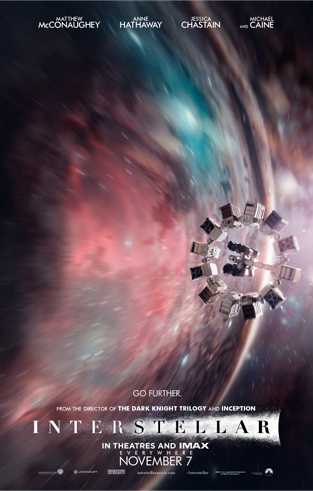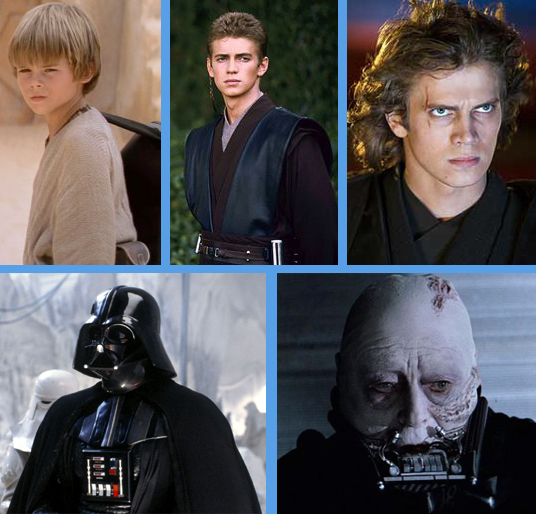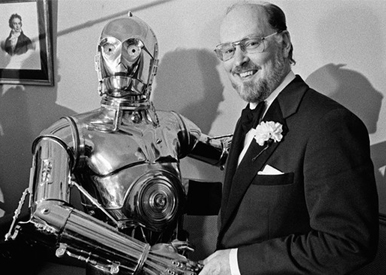
Well, November is finally here, which means Interstellar is out for the world to see. I caught it Tuesday and I must say it was certainly one hell of an experience.
I had the luxury of watching the film on a Cinemark Extreme Digital screen, which is as close to an IMAX screen as one can get without actually visiting an IMAX theater. As the majority of the film was shot with an IMAX camera, a signature of the film’s director Christopher Nolan, Interstellar is definitely meant for large screens. The far reaches of space couldn’t be more appropriate for 70mm film. It’s just what a filmmaker needs when wanting to put an audience into space, and take them to worlds beyond our own.
Caution: Spoilers ahead

I certainly find it appropriate to say Interstellar is the 2001: A Space Odyssey (1968) of my generation, and I say that with no intention of declaring Nolan’s epic a replacement for Stanley Kubrick’s classic. In terms of Interstellar’s visual spectacle, Nolan shows us what we’ve never before seen on the big screen, just as Kubrick did at the time. And he does this without simply copying and pasting elements from 2001. It’s this factor that makes Interstellar not just a movie, but an experience. One is sure to be wowed while watching the film, particularly the sequences involving the ship Endurance traveling through the wormhole and Gargantua (a black hole).
Interstellar is more than a “space movie.” It’s a film about survival, determination, exploration, family, and most importantly, love. The emotional exchange between Cooper (Matthew McConaughey) and his daughter Murph (Mackenzie Foy) prior to his leaving for the Endurance mission is certainly one of film’s most touching moments. And this further impacts the audience near the film’s end when Cooper, staring into the moment he parted from his daughter via an extra-dimensional tesseract within the black hole, painfully screams at himself to stay behind, to choose his daughter over the mission, despite the greater good the mission is meant to serve. However, his efforts are futile as he can’t alter the past. He can only watch past events unfold as they were always meant to. It’s heartbreaking for the audience, or at least it was for me.
Cooper’s relationship with his daughter is certainly the center of the film’s story, and despite the grandness of the film’s scale and visuals, Nolan ensures the heart factor isn’t overlooked.
I’m aware of the complaints surrounding this film, and while most of them are just stupid, I still dismiss the somewhat valid points. Why? I simply loved the film. I love science-fiction, the concept of space and space travel, and I’m a huge admirer of Nolan’s films, particularly Memento (2000) and Inception (2010). The thought of Nolan taking on a space-themed project with mind-exploring elements similar to those of his previous projects intrigued me. And the cast only added to my excitement.
As many know, McConaughey’s work in films such as Dallas Buyers Club (2013), Killer Joe (2011), Mud (2012) and the series True Detective (2014) has reminded filmgoers of his ability to put on enthralling, dramatic performances. This, of course, was a major selling point for Nolan’s first directorial feature since the conclusion of his Dark Knight trilogy two years ago. I, for one, was excited to finally see a non-Batman Nolan film in a theater.
A quick point to make regarding Nolan: I hate the terms “Nolanite” and “Nolanist.” Why can’t one simply admire a filmmaker’s work because it speaks to their interests regarding film? Many of those pleased with Interstellar who defend its criticisms are in turn branded with one of the above labels, and considered empty-headed sheep who praise the work simply because of the director attached. I will admit I like all of Nolan’s films, but that’s not because Nolan made them. I admire the films because I find the films to be well-made featuring well-told stories that address subjects in which I hold interest. Nolan also strives to be original and treat film as an art form that entertains and expands the mind, and for that reason, I respect Nolan as a director.
Getting back to Interstellar, some may have found parts of the film, especially the third act, too ridiculous for their ability of suspending disbelief. I’m someone whose imagination is stimulated by the most daring aspects of science-fiction. It’s the very reason I read and watch science-fiction stories and films. Of course, poor performances and lack of interest in a particular story can affect one’s opinion, but a crew venturing through a wormhole to new worlds with the hope of saving humanity could never fail to seize my attention. But would I have retained interest, seen or loved the film had a different director or cast been involved? Who the hell knows? Frankly, it depends on those very elements, including plot details. The fact of the matter is Interstellar is here, and I love the film as it is, as opposed to whatever hypothetical scenarios disappointed viewers may conjure up.
Real quick, I’ll address some of Neil deGrasse Tyson’s Mysteries of Interstellar, or what one may perceive as complaints regarding some of the film’s plot details.
“If you can poke through a tesseract and touch books, why not just write a note and pass it through?”
I’ll do you one better. Why not just plow yourself through the damn books and physically stop yourself from leaving? This film made clear why such interaction with the past was unachievable. Gravity was the only thing that could get through the barrier, otherwise Cooper would have certainly done more.
“Stars vastly outnumber black holes. Why is the best Earth-like planet one that orbits a black hole?”
It’s never stated that THE best planet for sustaining human life was one that orbits a black hole. The humans’ only options were those found on the other side of the wormhole, which were coincidentally near black hole. They didn’t search the whole damn universe. The best candidate of the humans’ options happened to be orbiting a black hole, yes. What else are you going to do though? Scour the rest of the universe and hope to find another viable candidate in time to save humanity? The question really is which is the lesser of two evils?
“Who in the universe would ever know the titles of all their books, from behind, on a bookshelf?”
Cooper didn’t. As I have only seen the film once, I can’t specifically recall the issue Tyson is addressing here. What I can say is that I don’t recall Cooper, at any time, recounting the names of his books while in the tesseract. The titles were irrelevant to his actions. He was observing the width of the books to correctly send the binary message to his daughter in the past.
“How a pickup truck can drive with a flat tire among densely planted corn stalks taller than it?”
He drove a dually.
“If wormholes exist among our planets, then why can’t one open up near Earth instead of Saturn?”
Who the hell knows? For one, we wouldn’t get to see the amazing shot of the Endurance passing Saturn. I don’t know squat about wormholes, but my mind supposes that if one were to open in close proximity to Earth, severe gravitational repercussions would possibly come about. Saturn on the other hand, is larger than the wormhole depicted in the film, and I therefore suspect the wormhole wouldn’t have much of an effect on the neighboring planet.
“Gotta tell you. Mars (right next door) looks way safer than those new planets they travelled to.”
Possibly, but the lack of an atmosphere capable of sustaining human life and other resources, not to mention the fact that Mars is dominated by deserts and frequent dust storms, omits the planet as a suitable candidate.
“If you crack your space helmet yet keep fighting, the planet’s air can’t be all that bad for you.”
Again, I need to see the film a second time with these statements in mind, but if I remember correctly, Cooper was no longer fighting Dr. Mann once the front of his helmet cracked. He was rolling around on the ground, struggling to survive. Plus, Mann stated earlier about how a person could breathe the air temporarily, but long-term exposure was dangerous. Cooper was never fully exposed to the foreign environment, as his helmet was only cracked. The sheet of glass didn’t completely shatter, so most of the barrier separating him from the outside air was still intact. And he still had some oxygen in his suit, so Cooper’s chances of survival weren’t all that slim given he was only compromised for several minutes before being rescued.
“Can’t imagine a future where escaping Earth via wormhole is a better plan than just fixing Earth.”
Perhaps they couldn’t “fix” Earth, or they were looking at the big picture, i.e. a long-term solution. They don’t give enough information regarding human society at that time, or what methods were already implemented to fix the planet’s problems. Judging by what took place in the film, I can only imagine there weren’t too many options left. We just don’t have all the facts.
“In this unreal future, they teach unscientific things in science class. Oh, wait. That is real.”
This is the one thing I don’t contest, as this issue is staring us in the face right now. I couldn’t have said it better myself.
 To commemorate 9/11 this year, I’ve decided to stray away from anything relating to destruction and death.
To commemorate 9/11 this year, I’ve decided to stray away from anything relating to destruction and death.















 I’m going to start by getting this guy off the table.
I’m going to start by getting this guy off the table.
 This is more of a nostalgia bit than anything else.
This is more of a nostalgia bit than anything else.
 The best part of Phantom Menace is this man.
The best part of Phantom Menace is this man.















